Great places to travel: If you’re traveling to Puglia , Salento may be one of the best regions of Italy you’ve never heard of
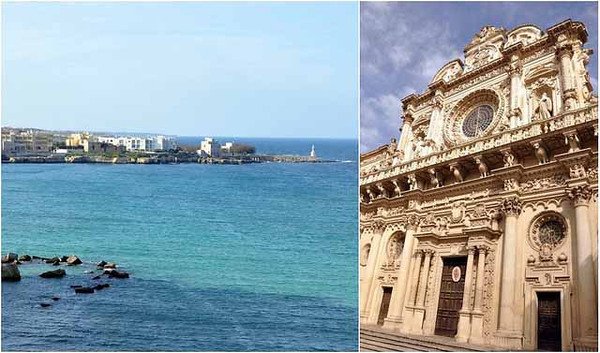
Serene is the term I would use to describe Salento, what I consider one of Italy’s best kept secrets. Part of Puglia, it is the most southern province of the region that makes up Italy’s heel. Some Europeans travel to Puglia and even fewer Americans, but its beauty is widely known among Italians, who come in droves during July and August. Known as the “California of Italy,” presumably for its beauty and beaches, deep blue and sparkling clear seas surround three sides of Salento. I had also heard that it is a food lover’s paradise. Good food and gorgeous seas are all I need to hear to book a trip.
Thanks to my friend Laura, owner of Ciao Laura’s Culinary Vacations, I had an insider’s look into the region. She put me in contact with Ylenia and Claudia, the Salentine ladies who run her Puglia food tours, and asked them to give me a few food and travel tips. Initially, I thought they would show me a little of the area, give me some tips, and leave me to explore the rest alone. Obviously, I knew nothing of Salento hospitality.
The first evening they took me around Lecce and introduced me to some of their friends. Before I knew it, all of us were strolling along the streets, popping into wine bars and shops, and chatting like long-lost friends. What was initially a solo trip, suddenly felt like a girlfriends’ getaway and the feeling remained throughout my stay. Every day I was there, they took me around and introduced me to more friends who welcomed me into their homes and shared a piece of Salento with me. Besides the new friends I made and one of the best culinary journeys I’ve had, I also saw and learned so much about the region’s countryside, its culture and its history. All influenced by the region’s many conquerors and inhabitants.

Lecce, the province’s capital, was my base for exploring the area. The historic city center is virtually an outdoor Baroque museum. The facades of churches and buildings, along with the city’s courtyards, windows, terraces and interiors, are decorated in elaborate sculptures in the local stone, pietra Leccese. The stone begins as a soft pliable mass and then hardens with time, making it easy to work into delicate and ornate figures. The most ornate of these facades belongs to the Basilica Santa Croce. Except for the rose window, every bit of the façade is covered in one decoration after another. On seeing it, the Marchese Grimaldi said that it made him think that a lunatic was having a nightmare.
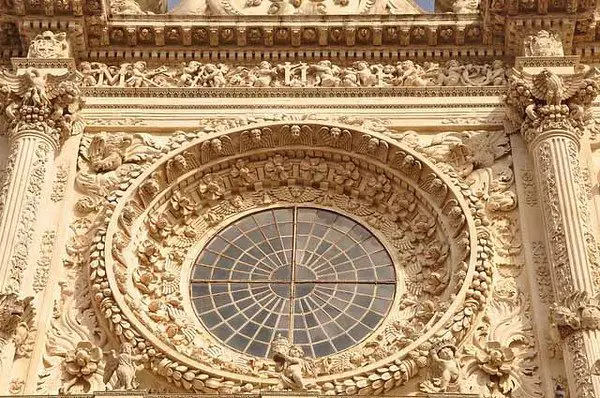
Lecce’s active social center is Piazza Sant’ Oronzo, named for the city’s patron saint. At Noon opera music plays out into the piazza letting everyone know it’s time for a pre-lunch drink, aperitivo. Wine bars and cafes line the square, where you’ll find many socializing and sipping at noon and in the evening. The view isn’t bad either. Remains from Lecce’s Roman era sit just below the piazza floor. Half of a Roman amphitheater has been uncovered from under the piazza. While you relax at one of the outdoor cafés, the horseshoe shape of the amphitheater and old Roman arches lay at your feet.
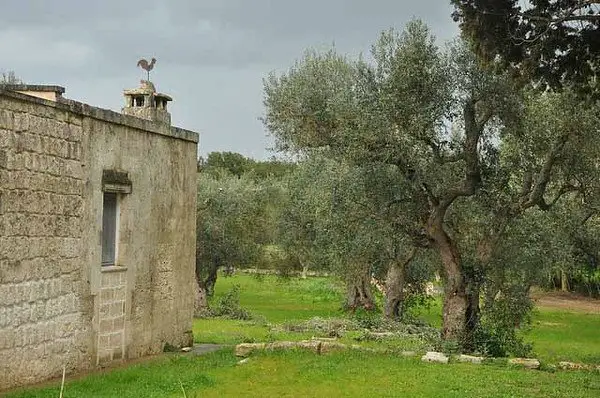
Each day we visited different parts of the Salento countryside. The landscape is relatively flat with olive groves stretching out infinitely under the big sky. Puglia produces more olive oil than any other Italian region. Around 40% of the olive oil in Italy is from Puglia. There are twelve types of olive trees in Salento alone. The trees are big with thick and knotty trunks, centuries-old and in a never-ending stream across the land.
Once in a while a massive building, usually white, springs up above the olive trees. Ancient fortified farmhouses, called masserie, most of them were built between the 14th and 18th centuries. Fortified with high stone walls to protect against invasions by pirates and the Turks, they were living communities that housed families of the working farmers, and are like little cities. They have courtyards, communal gathering spaces and even small churches within the confines of the walls. Of the masserie that were abandoned in the early 20th century, many have been restored into luxurious hotels and boutique bed and breakfasts. Others have been restored to working order. In those, you’ll find working vineyards, animals whose milk make creamy Salento cheese, fields full of vegetables and fruit, and of course, olive groves.
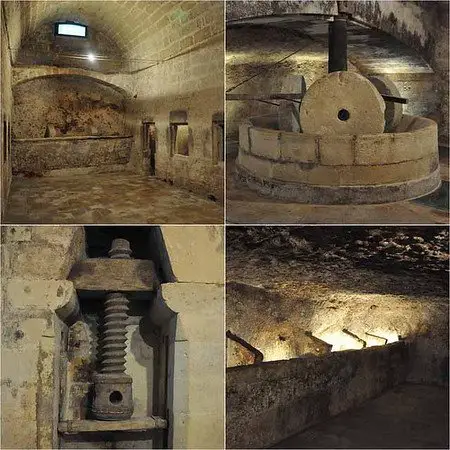
Under a majority of these masserie are ancient underground oil mills, called frantoio ipogeo in Italian. We toured the wine producing L’Astore Masseria, one of the first masserie to be restored. Its underground olive mill, originally built in the 1700s was one of the bigger mills of the area. Both ingenious and absurd, these mills were carved out of the stone under the earth. The harvesters dropped the olives into specified holes in the ground. They fell through the holes and into rooms built to store the olives. Great stone mills pushed by animals crushed the olives, and then moved them to the olive pressing area. Ingenious and efficient, right? The absurd part: Both the animals and the workers lived underground together, albeit in different rooms, during the entire oil-making season.
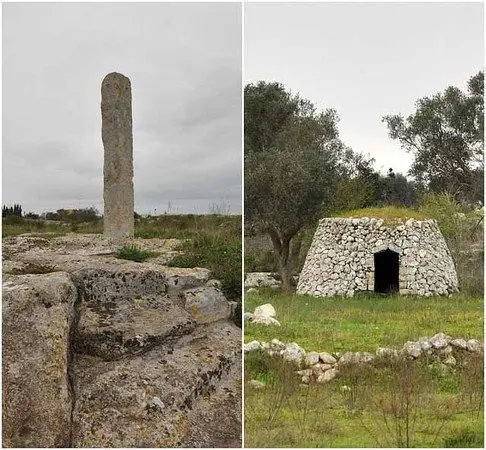
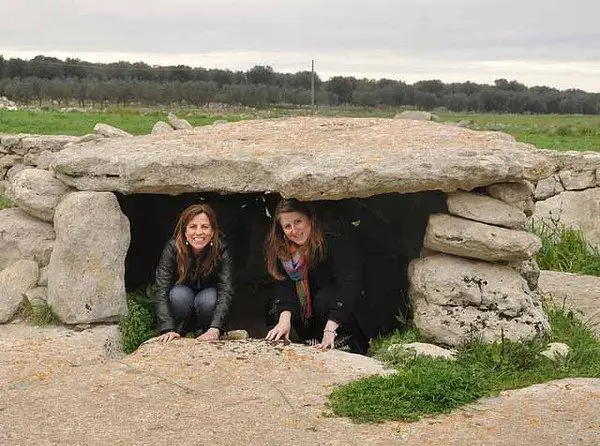
Because of its relatively flat terrain, one that winds through the verdant countryside and along gorgeous coastlines, Salento is one of the top biking destinations in Italy. We drove along a biking trail in the Otranto area. There are remains from a civilization dating back to the Bronze Age, called the dolmen and menhir. Although scientists cannot identify exactly how these cultures used them, some suspect the tall stones pointing to the sky, menhir, were used as a form of sun worship or as a time-telling and astrological device. The squat dolmen, made of several smaller stones holding one larger stone plank, may have been places for sacrifices and/or funeral ceremonies. Of course, I found this out after I went inside one of them! There’s even more antiquity in the area, if only from a few hundred years ago. Muretti secchi, dry stone walls and the pajare, stone huts used for storage are scattered throughout the countryside. These were made in the same manner as the popular Trulli, the stone huts popular and prevalent in Itria Valley of Puglia.
My visit was in March, so I didn’t participate in the region’s water activities, like snorkeling, scuba diving, cliff scaling, sun bathing, and boating. Instead, we strolled along the promenades and alleys of two coastal towns. Otranto, located at the most eastern point in Italy, was originally a Greek settlement. On a clear day, it’s possible to see Greece and Albania from across the Adriatic Sea. It became an important post for both embarking to the East and warding off attacks from eastern enemies.
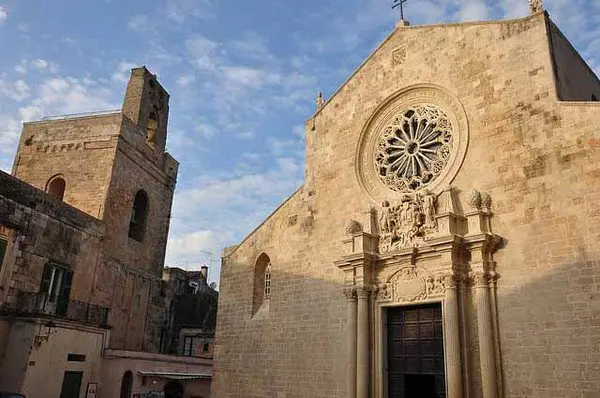
The warring history is reflected in the huge Aragonese Castle and in Otranto’s Cathedral. In 1480 Turks invaded and captured citizens of the city, threatening death to any who did not denounce Christianity. The 800 captured refused and were beheaded. A chapel in the Cathedral displays the skulls and bones of these 800 martyrs behind glass walls. The Cathedral also houses “The Tree of Life” an amazing mosaic that spans the entire floor of the cathedral, retelling many Biblical stories in pictures.
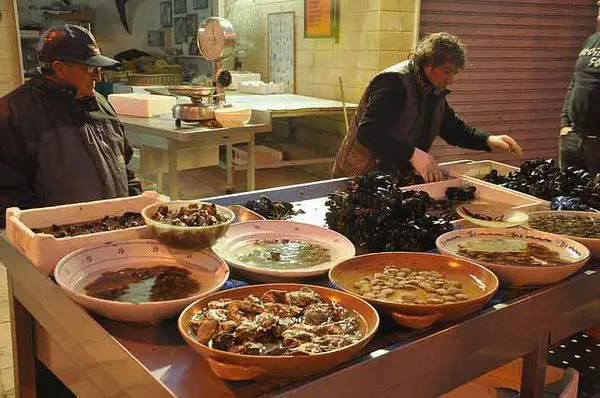
My tour of Salento ended with a visit to Gallipoli. Gallipoli’s name means beautiful city in Greek (Kallipolis). On the western coast of Salento and bordering the Ionian Sea, it is both a thriving fishing village and popular weekend resort with Pugliese. It’s popular for its beaches, views of the sea, nightlife, and fresh seafood. The old town sits on limestone in the shape of a circle; the walls sink into the sea. Connected to the new town by one bridge, its shape is that of a pot. So popular is strolling along the outer ring of the old town that they have a name for it, “fare la pentola” (literally translated it means “to make a pot”). After tasting freshly caught raw mussels and oysters at the fish market and visiting another Baroque beauty, the church of Sant’Agata, we “made a pot” around the city.
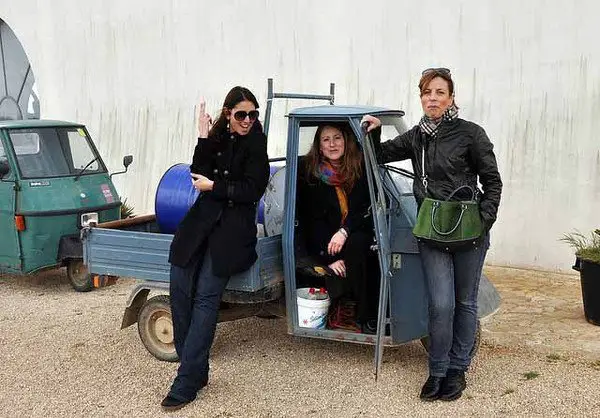
Travel to Puglia, time to travel home, but we’ll be back
I said goodbye to beautiful and serene Salento and to my new friends with a night stroll, listening to waves slap the limestone walls and gazing at the golden buildings under the moonlight.
MOST CHARMING PLACES IN PUGLIA ITALY ( BEAUTIFUL PLACES TO VISIT)
Header Photo by newneo47
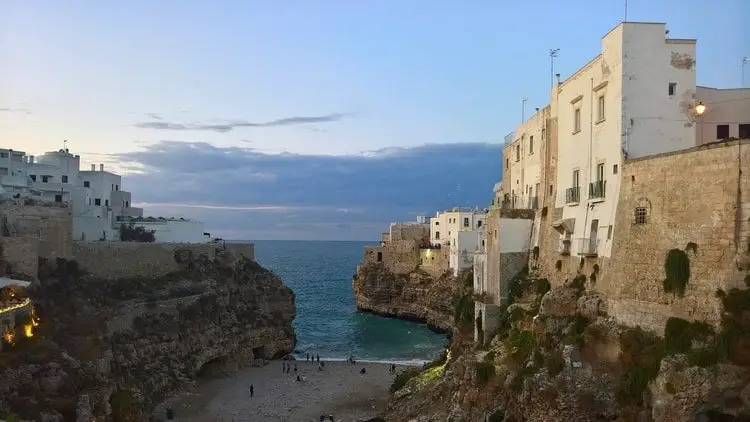
Beautiful photos Kathy! I hope to visit there sometime…
Thank you Jessica. I hope you get there soon, too.
Wonderful post Kathy. I will not argue with you on this one. Puglia is definitely one of the best places of Italy. Summer is coming up, and it’s time to schedule vacations to the blue-flag beaches.